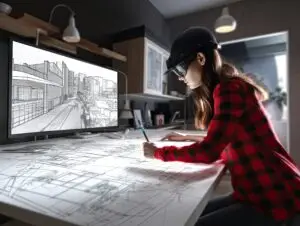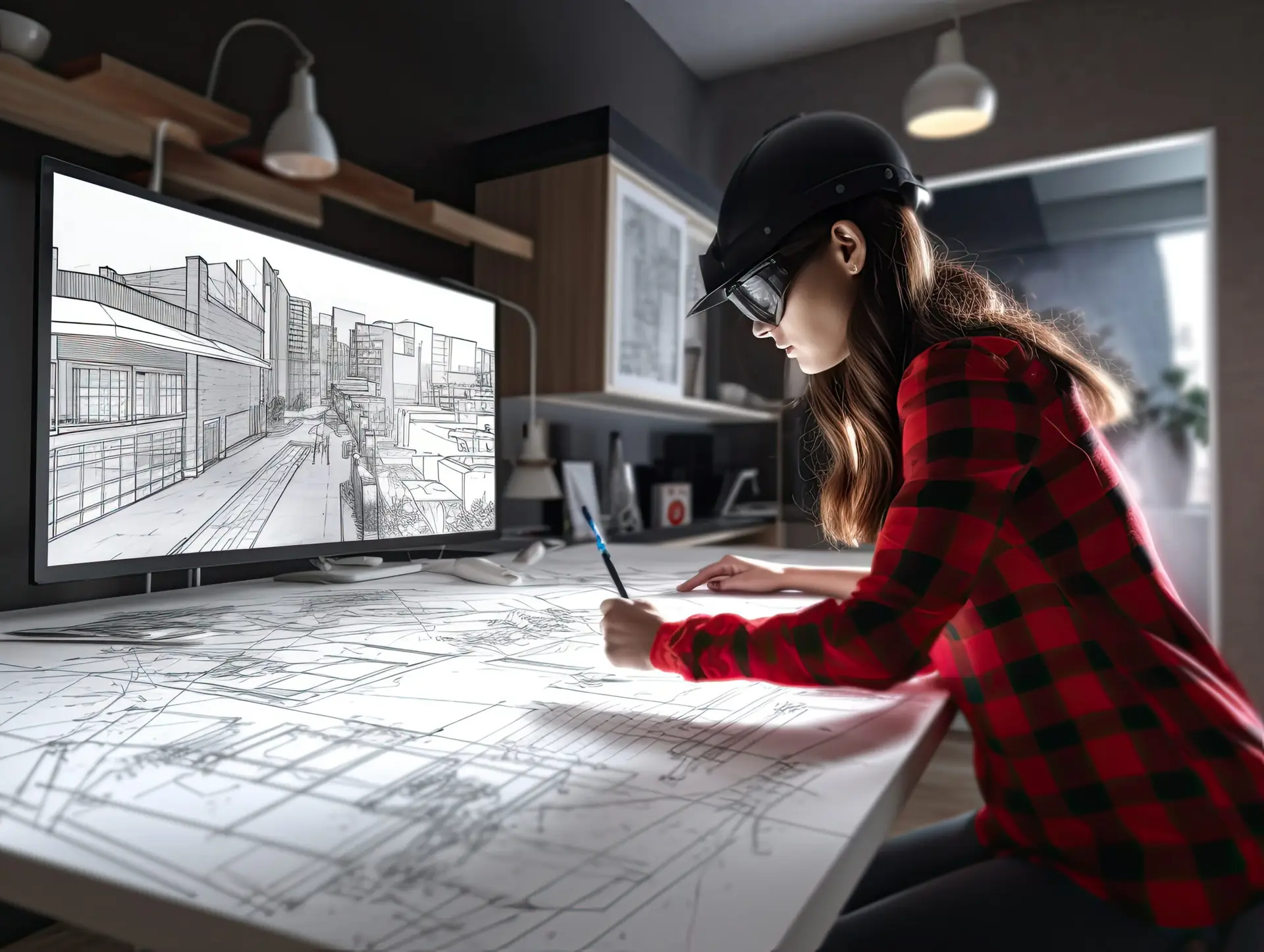Introduction: The Rise of AR and VR Technology in Business
AR and VR Technology have grown from being just entertainment tools to becoming crucial drivers of innovation in the business landscape. Businesses across different scales are now using AR and VR tech to boost operations, engage customers, and streamline workflows.
Advanced accessible technologies have the potential to revolutionize industries and create impactful experiences globally.. This blog explores how AR(Augmented Reality) and VR(Virtual Reality) technology is transforming the modern business landscape.
What is AR and VR Technology? An Overview
AR and VR might seem futuristic, but their applications are already making waves in various sectors. Augmented Reality overlays digital information onto the real world, enhancing physical environments with virtual elements.
On the other hand, Virtual Reality creates completely immersive digital experiences, transporting users into a simulated world. AR and VR tech enhance interactions, engagement, and drive innovation in various industries.

How AR and VR Technology are Transforming Industries: A Closer Look
AR and VR are driving unprecedented transformations across industries. Surgeons utilize AR and VR simulations for training and planning surgeries, while AR aids in real-time during operations.The automotive industry leverages AR for car design, prototyping, and virtual test drives.
The tourism industry uses VR to provide virtual travel experiences, giving customers a preview of destinations before booking trips.From logistics to entertainment, AR and VR Technology are disrupting traditional workflows and creating new business models.
Enhancing Customer Experiences with AR and VR Technology
One of the most significant impacts of AR and VR is on customer experience. AR allows customers to interact with products in new ways, such as virtually trying on clothes, glasses, or makeup. VR enhances this by offering immersive brand experiences, like 360-degree tours of resorts or virtual walkthroughs of real estate properties.
These technologies provide customers with deeper engagement, allowing them to make informed purchasing decisions without leaving their homes. AR and VR technology are transforming how businesses connect with their audiences, building stronger relationships and increasing satisfaction.
How AR and VR Technology Boosts Business Productivity
AR and VR technology are not just tools for customer engagement; they are also helping businesses improve productivity. For instance, companies use VR for virtual meetings, allowing teams to collaborate from different parts of the world in an immersive virtual environment.
AR assists employees in complex tasks by providing real-time data overlays, enabling faster decision-making. Whether it’s for employee training, design collaboration, or virtual product testing, AR and VR technology are streamlining processes and boosting operational efficiency, leading to higher productivity.
Applications of AR and VR in Retail, Manufacturing, and Real Estate
The retail, manufacturing, and real estate sectors have embraced AR and VR technology with remarkable success. In retail, AR allows customers to preview products in their real-world environments, while VR enhances online shopping by providing immersive store experiences.
In manufacturing, VR is used for product design, training, and simulating manufacturing processes. AR helps technicians with real-time assistance during repairs or installations. In real estate, potential buyers can explore properties through VR tours, allowing them to view multiple homes from anywhere in the world. These applications of AR and VR technology are revolutionizing how businesses operate.
AR and VR Technology in Marketing: Creating Immersive Brand Experiences
Marketing is undergoing a transformation, thanks to AR and VR technology. Brands now have the ability to create highly engaging and interactive experiences that resonate with audiences on a deeper level.
AR-powered campaigns allow users to scan a product or packaging to unlock additional content, while VR enables immersive storytelling through branded virtual environments.
Whether it’s launching a new product or running promotional events, AR and VR technology are providing marketers with innovative tools to capture attention and leave lasting impressions on consumers.
Training and Education: The Role of AR and VR in Workforce Development
AR and VR are redefining corporate training and education. Virtual Reality enables immersive simulations where employees can practice real-world scenarios, such as emergency situations or machinery operation, without the risks associated with on-site training.
AR enhances learning by providing real-time instructions and feedback in a hands-on environment. Whether it’s onboarding new employees or upskilling the workforce, AR and VR technology are proving to be effective tools for improving learning outcomes, ensuring safety, and reducing training costs.
Cost Efficiency and ROI of Implementing AR and VR Technology
While the initial investment in AR and VR may seem high, the long-term cost savings and ROI can be significant. By streamlining processes, reducing the need for physical prototypes, and minimizing travel costs for training or meetings, businesses can recoup their investment over time.
AR and VR enhance decision-making, reduce errors, boost customer satisfaction, leading to increased sales and profitability with a positive return on investment, making them a smart business choice.
Challenges Businesses Face When Adopting AR and VR Technology
Despite their benefits, businesses face several challenges when adopting AR and VR technology. High upfront costs, technical expertise requirements, and the need for robust infrastructure can be barriers for many companies.
Additionally, there are concerns about user adoption, as not all employees or customers may be comfortable using these technologies. Ensuring data privacy and security in virtual environments is another challenge. Businesses must carefully plan and address these obstacles to fully leverage the potential of AR and VR technology.
Future Trends: What’s Next for AR and VR in Business?
The future of AR and VR technology in business looks promising, with advancements in hardware, software, and network infrastructure accelerating their adoption. We can expect more seamless integrations of AR into everyday tools, such as AR glasses becoming a common business accessory.
VR is likely to become even more immersive with haptic feedback, enabling users to feel virtual objects. Additionally, the rise of 5G will enhance the performance of AR and VR technology, making real-time collaboration more efficient. As businesses continue to explore new ways to use AR and VR, these technologies are set to become even more integral to their operations and growth strategies.

